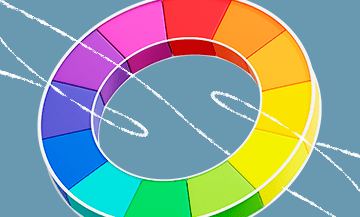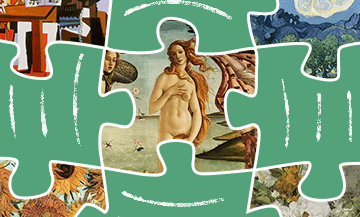Animal studies and animal artist
Animalism in drawing, painting and art
Animals, nature, and all their beauty have always inspired artists. However, when art becomes closer to nature, it acquires a unique character — animalism.
The art of animalism in drawing originates from the artists’ desire to capture animals in their natural habitat. Every feather or brushstroke becomes a reflection of wild life. Creators delve into the world of beasts, capturing their character, movements, and emotions on canvas or paper. As a result, the viewer is transported to the surroundings of forests, steppes, or jungles, where every moment is filled with intrigue and mystery.
Animalism in drawing is a way to convey the reality and emotional aspect of animals. The artist, using pencils or pastels, creates drawings where animals come alive on paper. Sometimes they are depicted in their full wild beauty, in their natural habitat, and sometimes — with pronounced human traits and emotions.
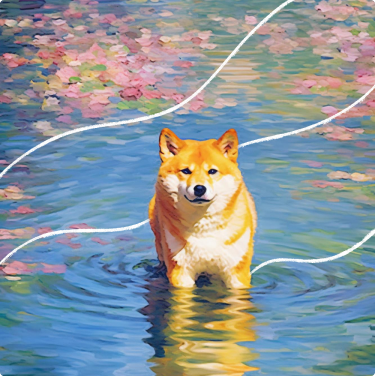
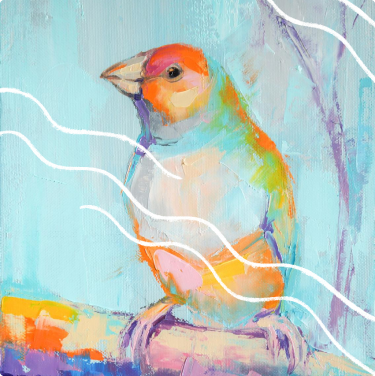
Painting, in turn, offers even more opportunities for the development of animalism. Artists use various materials and techniques to create unique paintings of animals. From brushes and oil paints to acrylics and watercolors, each artist finds their own way to convey the wild nature and beauty of animals on canvas.
In the modern world, animalism in art is gaining increasing popularity. Many artists, inspired by the animal kingdom, create stunning works of art that not only amaze viewers with their beauty but also allow a closer look at nature.
History of the origin and development of animalism
Despite the lack of deep historical or philosophical content, the genre of animalism holds a special place in the history of visual art.
The roots of this type of creativity go back to ancient times. Primitive art left evidence that artists of those times often chose animals as their models. For them, it was important to capture the anatomy of the beast, embody its character, and depict its behavior.
In Ancient Egypt, animalism received a new interpretation: many gods had animal heads, and the animal world became an integral part of mythological narratives.
Images of birds and animals are also found in the arts of the peoples of Asia, Africa, and Oceania. On ancient Greek vases, beasts share space with humans and gods.
In the Middle Ages, animals received allegorical interpretations and became symbols of certain qualities.
Artists of the Renaissance made attempts to depict animals naturally, which was a significant challenge given animals’ inability to hold a pose for long.
In the 19th and 20th centuries, with increasing scientific interest in the animal world, their depictions became more and more realistic. Animalists refined their skills in capturing the details of fur, feathering of birds, and characteristic poses of various species of fauna.
And, of course, in contemporary art, the theme of animals continues to maintain its relevance and is in constant demand.
If you want to be an animalist artist, you will need skill and a great love for nature, but you will learn to masterfully capture the character of each beast and bird!
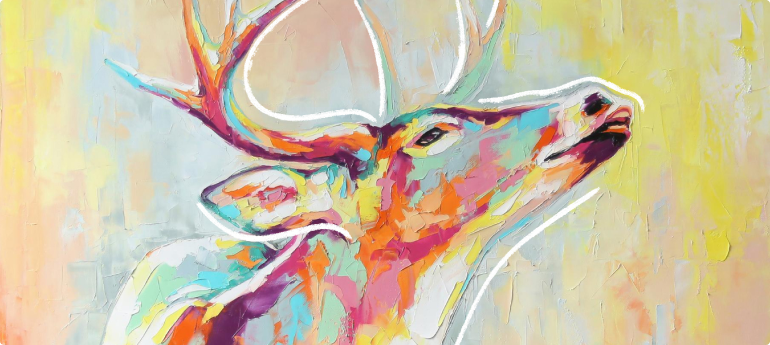
Tools, materials and techniques of animal artists
For working in animalism, you will need:
 Brushes:
Brushes:
Synthetic brushes: have excellent elasticity and are suitable for creating various textures on animal fur and feathers.
Natural hair brushes: are ideal for soft transitions and details, especially when working with animal portraits.
 Paints:
Paints:
Acrylic paints: allow for quick transitions between layers and create vibrant colors.
Oil paints: provide the ability to work with thin layers, creating a rich palette and deep shades.
 Artistic mediums:
Artistic mediums:
Oil mediums: are used to add texture and volume to fur, feathers, or animal skin.
Varnishes and gels: add effects such as shine in the eyes or wet fur.
 Paper and canvas:
Paper and canvas:
Primed canvas: is suitable for oil paints and provides a durable surface for long-term preservation of artworks.
Fine watercolor paper: is ideal for watercolor works, maintaining color brightness and detail.
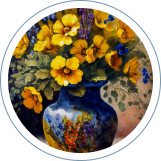 Techniques:
Techniques:
Layering technique: allows for creating deep and realistic images by adding layers for different textures and shades.
Blending and shading: is used to create soft transitions and add volume to fur or feathers.
Tip:When working on an animal portrait, pay special attention to the expression of its eyes. This not only makes your painting more expressive but also helps the viewer connect emotionally with the depicted creature.
Experiment with light reflections in the eyes, choose angles that emphasize the individuality of each animal. Don’t be afraid to delve into the “eyes” of animals; this will make the viewer ponder the mysteries and feelings that may be hidden in that gaze.
Famous masters and works in the genre of animalistics
The great German Renaissance artist Albrecht Dürer created animal portraits with incredible detail. His engraving “Rhinoceros” is an amazing example of skill in conveying texture and expressiveness of the animal world.
George Stubbs — an English artist of the 18th century, specialized in painting horses and other animals. His “Lioness and Lion” is associated with the grace and elegance of animals.
Flemish artist Frans Snyders of the Baroque era was known for his detailed still lifes depicting animals, birds, and hunting trophies.
Bruce Lee — a contemporary artist from Scotland, combines realism with abstraction in his works. His series “Throne” brings a new perspective to animalism with unusual angles and techniques.
Charlotte Lavey Oliver — an American artist, known for her depiction of wild animals. Her work “Elephant in the Room” features not only magnificent technique but also deep symbolism.
Each master has made a unique contribution to the history of animalism. Today, this genre continues to evolve, inviting us on a fascinating journey through the world of animals painted by great artists.
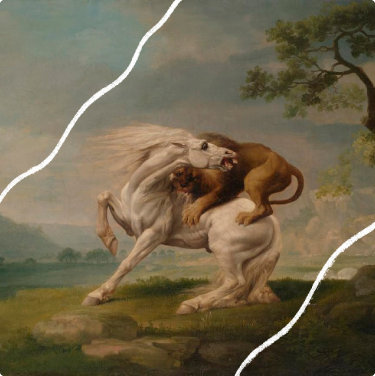

Animalism in modern art
From photographs and sculptures to paintings and video art, animalistic works reflect our attitude towards nature and living beings. Artists use animals as metaphors, exploring their behavior, appearance, and impact on the world around us.
Contemporary animalistic paintings often prompt reflections on our responsibility towards nature, environmental issues, and the connection between humans and the animal world. They offer new ways to perceive and understand our coexistence with diverse forms of life on the planet.
Animalistic art can be represented in various forms: painting, sculpture, photography, or even installations. It provides artists with freedom of expression and the opportunity to explore different aspects of the animal world.
Some artists create realistic depictions of animals, while others prefer abstraction, but what unites animalistic artists is a boundless love for art and animals!
Question-answer
This is a genre in which artists use images or elements inspired by the animal world.
They may depict animals realistically or stylized, conveying their characteristics, symbolism, or emotions.
Animalistic works include portraits of animals, nature scenes, or abstract compositions inspired by the forms and movements of animals.
The main focus is on depicting various types of animals. Animalist artists often pay attention to nature, landscapes, and ecosystems. They strive to convey the emotions and character of animals through their images. Reflecting the grace, strength, playfulness, or even mystical qualities of animals are central themes in animalism.
Animalism can manifest in various styles and techniques, from realism to abstraction, depending on the creative approach of the individual artist.
The earliest known manifestations of animalism can be found on the walls of Ice Age caves, where ancient artists depicted animals in their natural environments. These primitive drawings date back around 15,000 years.
Over time, animalism evolved across various cultures and arts, from ancient Egypt and Greece to the art of ancient Rome and beyond. In different eras and cultures, artists assigned various symbolic and aesthetic meanings to animal depictions.
With the rise of realism during the Renaissance in Europe, animalism became more systematic and structured. Artists began to study animals from a scientific perspective, leading to the creation of more realistic and detailed representations of the animal world.
However, animalism gained widespread recognition in the late 19th and early 20th centuries.
It became popular in French art, especially after the exhibition “Living Painting,” organized in Paris in 1905. Animalists like Rosa Bonheur, Jean-Baptiste Ilya-Locatier, and others began to portray animals as main characters in their paintings, rather than merely as decorative elements.
Animalism also became a significant direction not only in painting but also in sculpture and graphics.
An animalist artist is a kind of intermediary between the natural world and society, transferring the beauty and wisdom of the animal world into art so that everyone can enjoy this amazing part of our world.
An animalist artist strives to recreate animal images as accurately as possible. This requires not only artistic talent but also a deep understanding of the biology and behavior of various species.
Artists in this field work with watercolor, oil, charcoal, and even use digital art. Animals can be depicted in a variety of techniques: from realism to abstraction.
The first signs of interest in animals can be seen in the works of Russian artists of the 18th century. However, during this period, the focus on animal themes was more of a decorative element than an independent genre.
In the 19th century, a national style in art began to form in Russia. Artists started to study nature more closely, including its animal world. A significant contribution to the development of animalism was made by the Peredvizhniki artists Ivan Shishkin and Alexei Savrasov. Their works often depicted forest landscapes with animals, which helped popularize this theme.
In the Soviet Union, animalism also continued to develop. Artists Nikolai Fedorov and Alexander Deineka created works dedicated to the labor achievements of the rural population, often featuring animals.
And finally, in contemporary Russian animalism, artists continue to experiment with forms and themes. Some focus on realism, while others prefer abstraction or symbolism — more modern directions.
In the early antiquity, animals were depicted in the Assyrian Empire, where they were used as symbols of important deities and military victories.
However, a true breakthrough in the development of European animalism occurred during the Renaissance. Great Renaissance artists began to depict animals with much greater thoroughness and realism.
Albrecht Dürer and Leonardo da Vinci conducted detailed studies of nature and animals to achieve maximum accuracy in their drawings. They not only depicted purebred animals but also explored their anatomy, gestures, and expressions.
In the 19th century, animalism became an independent genre of art. Romantic artists of that era became famous for their dramatic depictions of wildlife, thus playing a significant role in the development of the genre.
In the industrial era, animal painting became more accessible due to the advent of photography, which somewhat influenced the interest in animalism.
Modern European animalism continues to evolve.
Artists continue to use a variety of styles and techniques to convey their vision of the animal world.
From photorealism to abstraction, from classical painting to sculpture, animalists continue to explore and depict animals in their works, making an invaluable contribution to the development of contemporary art.



